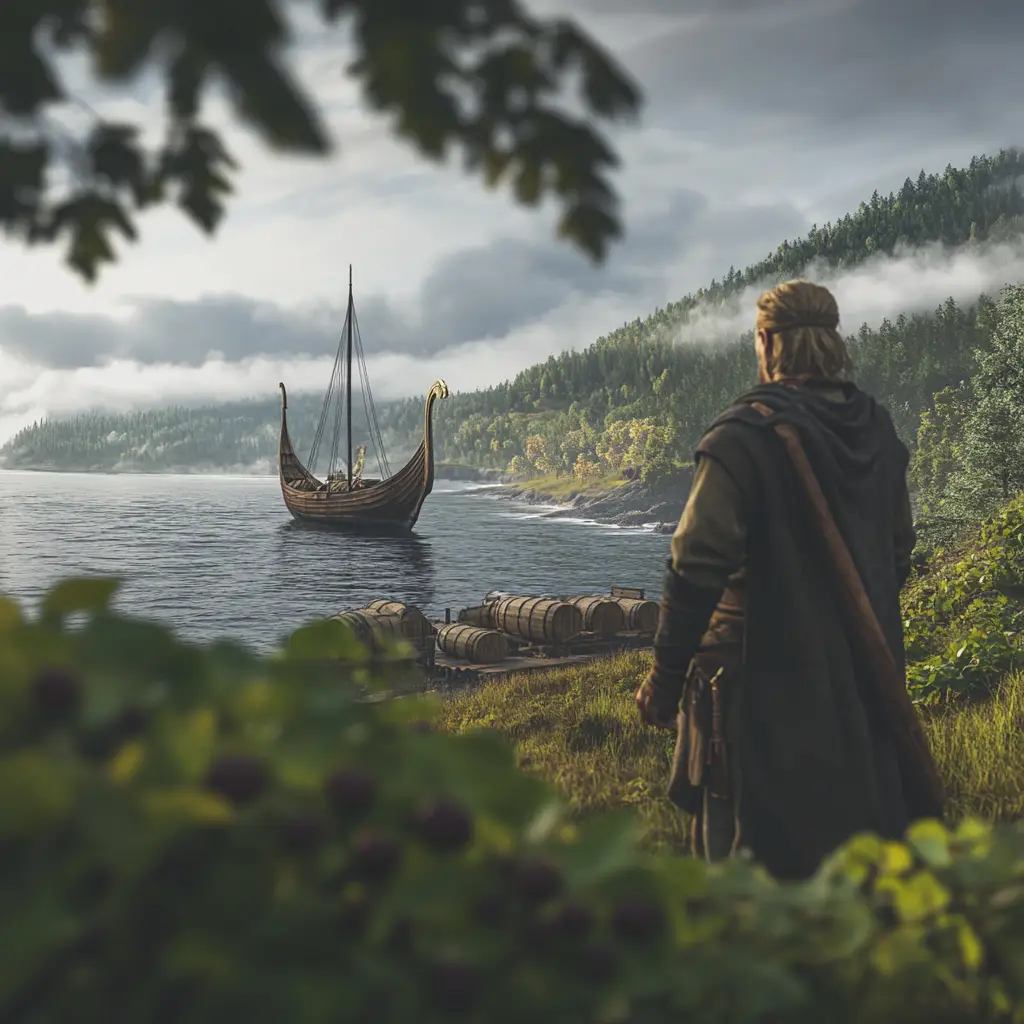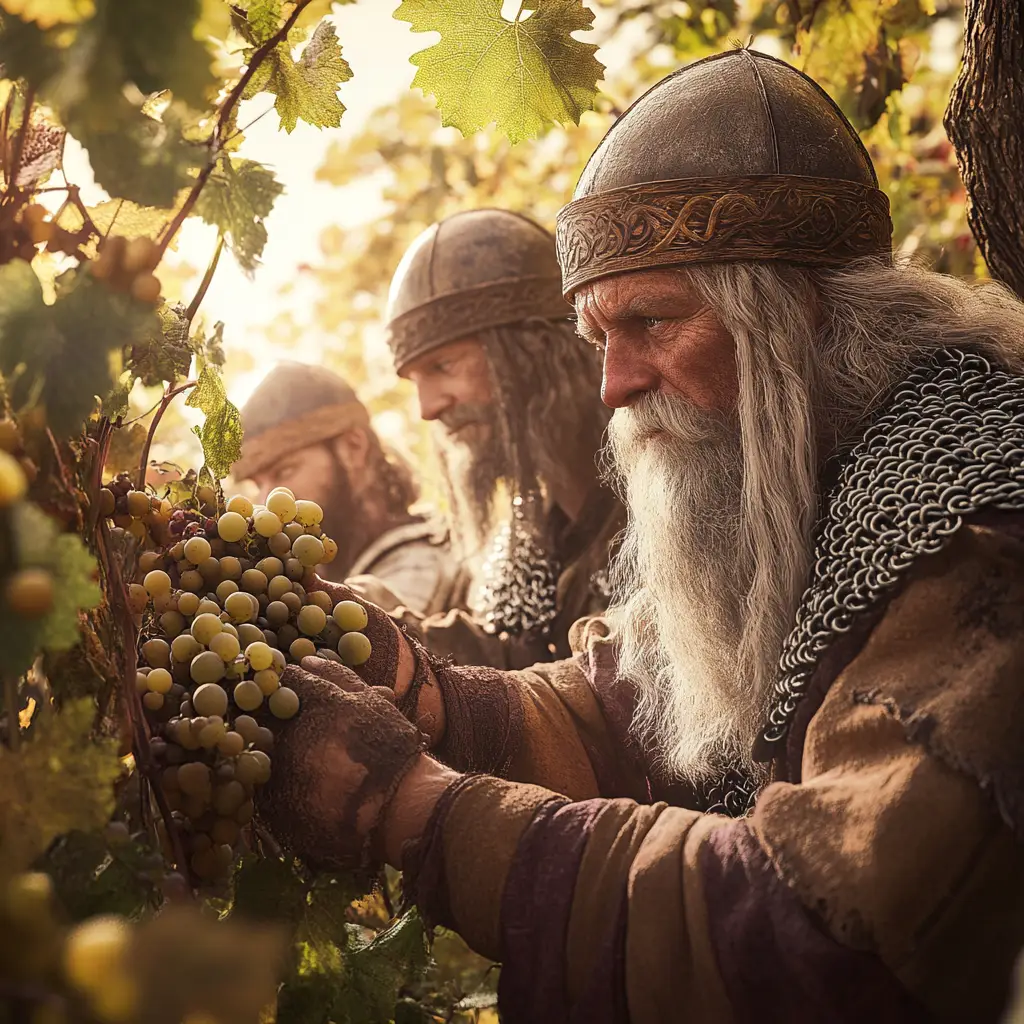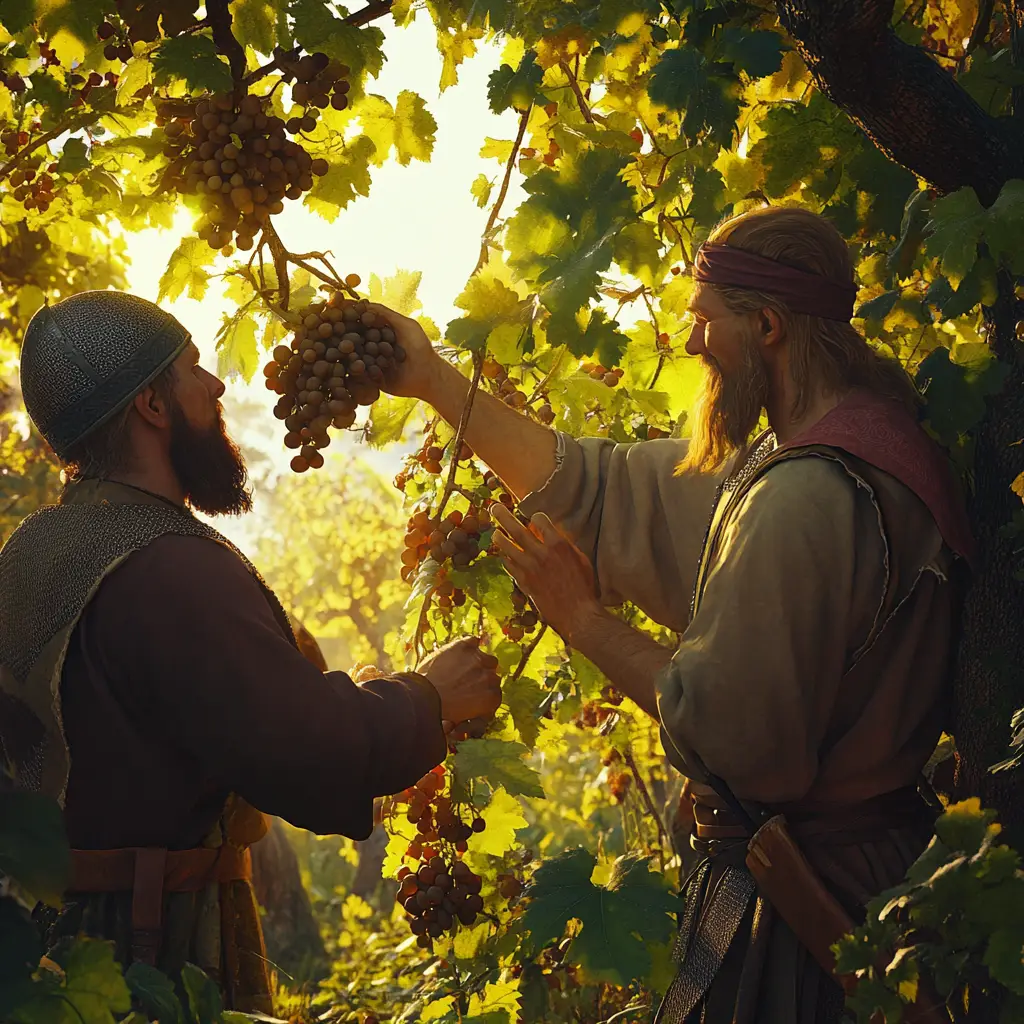Leif Eriksson’s Voyage to Vinland – An Account from the Saga of the Greenlanders
Leif Eriksson’s journey to Vinland is one of the most famous Norse explorations, marking the first recorded European contact with North America around the year 1000. His voyage is detailed in the Saga of the Greenlanders (Grænlendinga saga), which describes how he followed reports of unknown lands to the west and set sail from Greenland in search of new territory.
Bjarni Herjólfsson’s Discovery of a New Land
Leif’s voyage to Vinland was inspired by the earlier experience of an Icelandic merchant, Bjarni Herjólfsson. While sailing from Iceland to Greenland, Bjarni was blown off course and sighted an unfamiliar coastline covered in forests. However, he did not land, as his priority was to return to Greenland.
When Bjarni shared his story, many people, including Leif Eriksson, were intrigued. Bjarni’s description of the rich, wooded lands starkly contrasted with Greenland’s harsher environment, leading Leif to take action and investigate further.
Leif Eriksson’s Decision to Explore
Leif, the son of Erik the Red, was an ambitious and adventurous Norseman. He purchased Bjarni’s ship, gathered a crew of around 35 men, and prepared to embark on a westward voyage. The expedition was well-equipped, with supplies to sustain the crew for an extended journey.
Before setting sail, Leif visited Norway, where he spent time at the court of King Olaf Tryggvason. The king, a devout Christian, encouraged Leif to spread Christianity among the Greenlanders. Leif accepted this mission but remained focused on his goal of reaching the mysterious land that Bjarni had seen.
The Voyage to Vinland – Lands Discovered
Leif and his crew sailed west from Greenland, encountering several distinct regions before reaching Vinland. The saga describes these lands in the following order:
- Helluland (“Flat Stone Land”)
- The first land they encountered was barren and rocky, with little vegetation.
- The saga describes it as having large flat stones and being unsuitable for settlement.
- This land is believed to correspond with modern-day Baffin Island in Canada.
- Markland (“Forest Land”)
- Sailing further, they reached a more promising land covered in dense forests.
- The presence of trees was particularly valuable, as Greenland had few natural forests.
- This land is generally thought to be Labrador, known for its vast wilderness.
- Vinland (“Wine Land”)
- After sailing south, Leif and his crew arrived at a fertile land with a mild climate.
- The saga describes how they found wild grapes, which inspired the name Vinland.
- They also discovered self-sown wheat fields, a sign of rich soil for farming.
- Scholars believe Vinland refers to parts of Newfoundland or possibly areas further south in Nova Scotia or the Gulf of St. Lawrence region.
Establishing a Settlement in Vinland
Leif and his crew decided to establish a temporary settlement, which they named Leifsbúðir (“Leif’s Booths” or “Leif’s Houses”). They built shelters and explored the surrounding land, noting its abundance of natural resources.
- The rivers and lakes were full of freshwater fish, providing a reliable food source.
- The land had good pastures and mild weather, much more favourable than Greenland.
- They gathered grapes and timber, both of which were valuable commodities.
The saga does not mention any encounters with the native inhabitants (Skraelings) during Leif’s expedition. It is in later voyages that tensions with indigenous peoples arise.
The Return to Greenland
After spending some time in Vinland, Leif and his crew loaded their ship with timber, grapes, and other resources before setting sail back to Greenland. They arrived home safely, bringing news of the new land.
Upon his return, Leif found that his father, Erik the Red, had died. He inherited Erik’s estate and took on a leadership role in Greenland. The saga credits him with introducing Christianity to the Norse settlers there, fulfilling the request of King Olaf Tryggvason.
Legacy of Leif Eriksson’s Voyage
Leif Eriksson’s successful journey to Vinland made him the first known European to set foot in North America, nearly 500 years before Christopher Columbus. His discoveries inspired later expeditions, including those of his brothers Thorvald Eriksson and Thorfinn Karlsefni, who attempted to establish permanent Norse settlements.
The Norse presence in Vinland was short-lived due to harsh conditions, conflicts with indigenous peoples, and the difficulty of maintaining long-distance supply lines. However, Leif Eriksson’s voyage remains a crucial moment in history, demonstrating the exploratory spirit of the Vikings and their ability to reach distant lands far before the Age of Exploration.
Archaeological discoveries, such as the Norse settlement at L’Anse aux Meadows in Newfoundland, have confirmed that Viking explorers did reach North America, supporting the events described in the saga.


